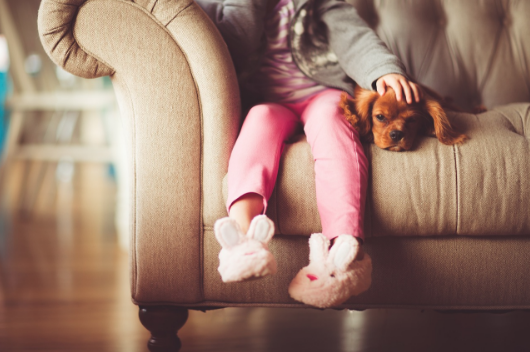There is an age-old, open-ended phrase: “To supervise your kids around dogs.” What exactly is that supposed to mean? This phrase sets families up to fail because it gives them a false sense of security. It gives the impression that if they are supervising interactions, nothing could go wrong. As a mother of two, not a second goes by in life that I am not overlooking or monitoring every situation around my babies. It can be exhausting because your mind never stops working and anticipating the following moments. If my toddler is at the beach and starts walking towards the water, I expect what could happen. I make sure to be highly diligent because there is a risk of her drowning. If my 11-month-old is picking something off the ground, I again go into mommy mode and take it from her because she could choke. The list of things we mommies have to watch for is never-ending!
No mother wants anything terrible to happen to her children. Why, then, are over 800,000 patients seeking medical attention in the US for dog bite-related injuries, most of them from their family pets? The simple reason is that families don’t know what to look for to ensure their children have positive interactions with their family dog. This information is essential to me if you have kids and dogs together. One of the hardest things to accept is that situations can change instantly. A once-tolerant family pet can finally reach its limits. A dog that used to allow kids to do certain things might disapprove of that any longer. You have to stay flexible in understanding this and aware of what our dogs are trying to tell us at any given time. Your children’s safety is at stake. Dogs are rehomed or surrendered to shelters because they lack an understanding of their communication system with us. Dogs communicate the emotions they experience when joyful, relaxed, anxious, or fearful, using body language and cues. It is a system of messages and signals you can quickly identify and comprehend. When you better understand your dog’s communications, you can begin to predict your dog’s feelings and intentions. By knowing all of this, you can anticipate your dog’s behavior in numerous scenarios. The vital signals to look for in your canine, especially around young kids, are avoidance and displacement behaviors.
Avoidance Behaviors
Avoidance behaviors are body cues that tell us that your dog is uneasy or that stress is building. Here are some practical examples of avoidance behaviors:
- Your baby crawls towards the dog, and they get up and find somewhere away from the baby.
- Your toddler tries to pet the dog, and the dog avoids the petting.
- Anytime your kids are overly active, the dog tries to find a quiet space away from them.
- When your child is vocal or overwhelming, your dog can bark, start pacing, and retreat away from them.
- If your toddler is hugging the dog and sees the dog turn its head, it shows the whites of his eyes. Dogs don’t like this!
- When your baby tries to sit by the dog, your dog continually repositions to have space away from the baby.
- When your young one approaches your dog when eating or drinking, the dog will growl or show their teeth. Remember never to correct a dog when they bark, or you will take away that cue, which may lead to the dog biting without warning.
Displacement Behaviors
Displacement behaviors are everyday dog behaviors shown out of context. They signal to us that they are experiencing conflict and anxious energy. Some examples are:
- When your baby starts crying, your dog will lick their lips randomly. This behavior has nothing to do with feeding treats or their meals. It happens outside the context of food.
- When you raise your voice or the energy in the house gets chaotic, you notice your dog yawning.
- If your dog is around yelling and they randomly start sniffing.
- If your home is extra noisy, and you see your dog shaking (like they just had a bath and are trying to get the water off), it’s a sign your dog could have anxious energy. It is called a wet dog shake, but they are not wet.
- If you have company, or the kids have their friends for a playdate, you notice your dog trembling when it’s not cold out. That’s a sign they are uncomfortable and stressed.
If any of these examples are something you recognize in your dog, it displayed avoidance and displacement behaviors. You’ll need to interject or allow your dog the means to get away from the scenario that is causing them stress. Recognizing these signs in your dog and around your kids could prevent your dog from being pushed into a situation that could lead to biting. Remember, we want our dog to give us this feedback. There is nothing wrong with your dog for showing avoidance or displacement signs. It is much scarier and more unpredictable for a dog not to display this. We never want to correct your dog for communicating that they are uneasy or anxious, especially around babies and children. It’s more complex than just supervising your child around your dog. You have now entered the next stage of dog ownership. It is your job to know your dog and be able to identify the body language they are displaying and how to react accordingly. Don’t force your dog to like your baby or your kids as the family evolves. Instead, the best thing you can do for your family is to accept your dog’s reactions and respond accordingly. If your dog displays any aggression, seek a professional trainer to evaluate the situation. They can determine if this is a training issue or your family could be at risk. Remember, a dog’s tolerance levels can change as the baby develops and ages. If families need assistance reading their dog’s body language, follow the Dogs to Diapers YouTube Page.



